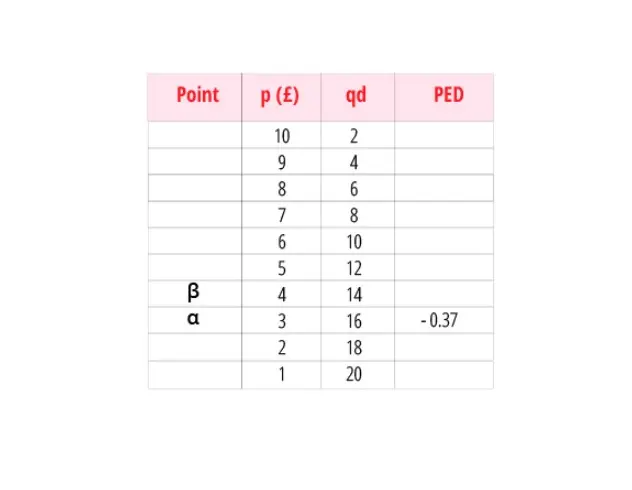
Point Elasticity of Demand
Arc and point elasticity of demand
Arc elasticity
Arc elasticity of demand (arc PED) is the value of PED over a range of prices, and can be calculated using the standard formula:

More formally, we can say that PED is the ratio of the quantity demanded to the percentage change in price.
Point elasticity
Point elasticity is the price elasticity of demand at a specific point on the demand curve instead of over a range of it.
To get point PED we need to re-write the basic formula to include an expression to represent the percentage, which is the change in a value divided by the original value, as follows:

We can then invert the denominator, to get:


Elasticity has now been spilt into two parts, the 


Example
For example, consider the demand schedule for a hypothetical product. We can now calculate the point elasticity at point 


We can repeat this for point








